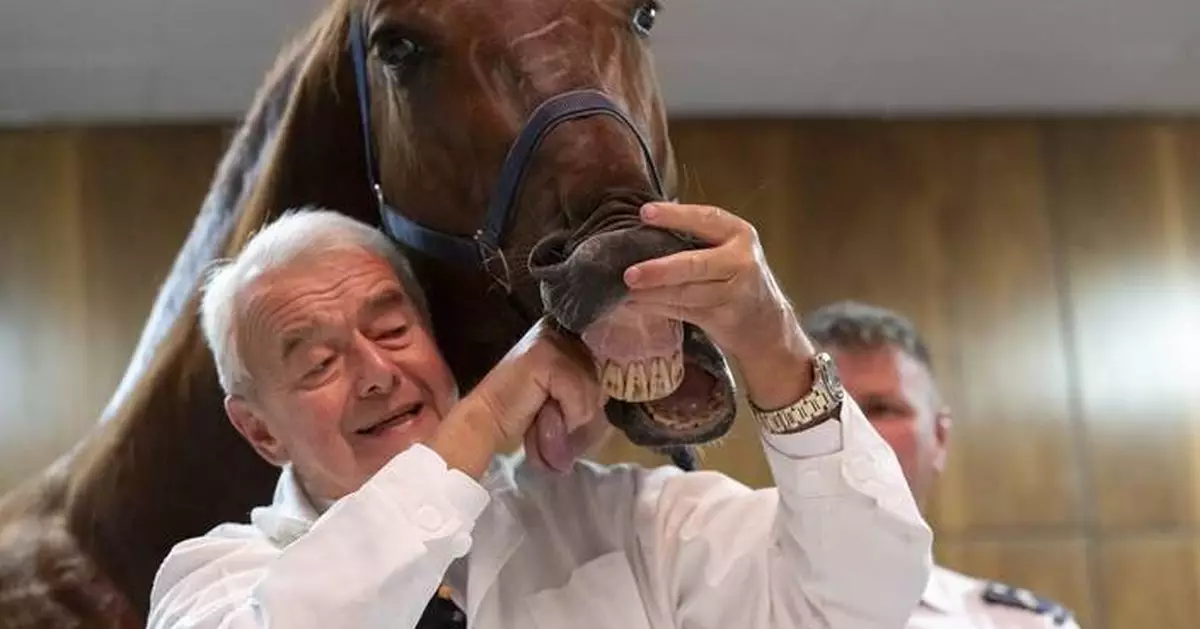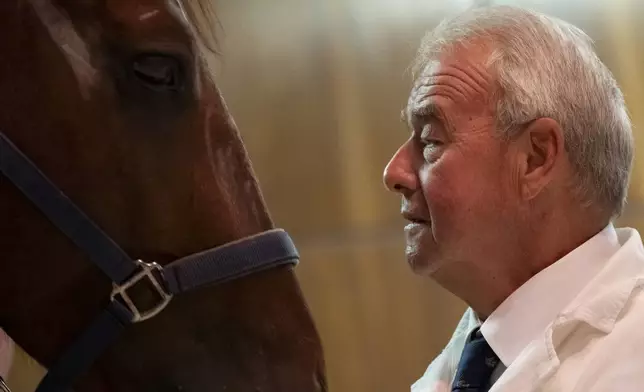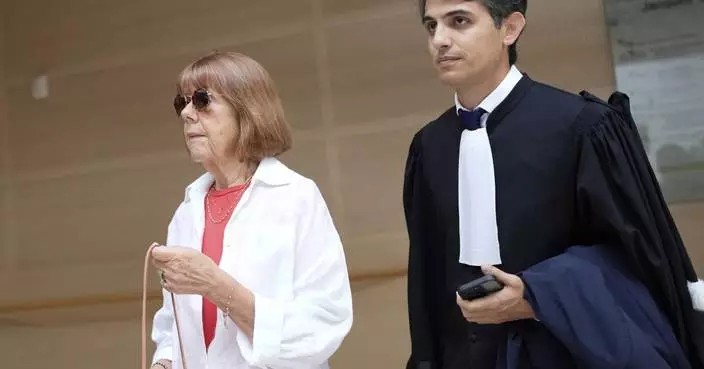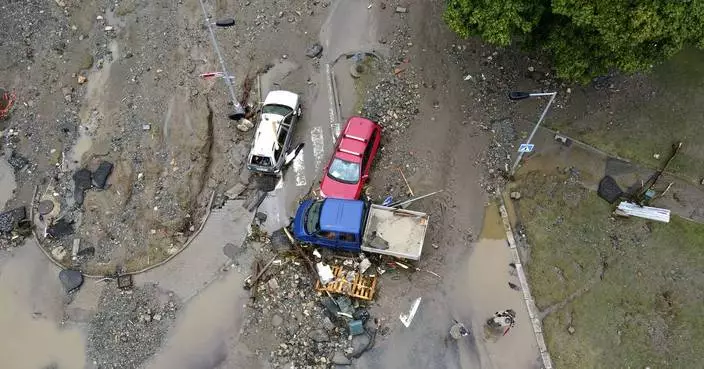BUDAPEST, Hungary (AP) — A lecture hall full of first-year veterinary students in Hungary eagerly took their places for the first animal anatomy lesson of their academic careers, when two full-grown horses clopped inside and joined the class.
The rector at the University of Veterinary Medicine in Budapest, Dr. Péter Sótonyi, coaxed one of the animals onto a riser at the front of the hall and used a stick of chalk to draw onto the horse — from head to hooves — where its bones, organs and muscles could be found inside.
Click to Gallery
BUDAPEST, Hungary (AP) — A lecture hall full of first-year veterinary students in Hungary eagerly took their places for the first animal anatomy lesson of their academic careers, when two full-grown horses clopped inside and joined the class.
Dr. Peter Sotonyi, rector of the University of Veterinary Medicine in Budapest, Hungary, gives an anatomy lecture for first-year students, using chalk to mark the body of live horses, Monday, Sept 9. 2024. (AP Photo/Denes Erdos)
A first-year student takes notes during an anatomy lecture using a live horse from Dr. Peter Sotonyi, rector of the University of Veterinary Medicine in Budapest, Hungary, using a live horse, Monday, Sept 9. 2024. (AP Photo/Denes Erdos)
Dr. Peter Sotonyi, rector of the University of Veterinary Medicine in Budapest, Hungary, gives an anatomy lecture for first-year students, using chalk to mark the body of live horses, Monday, Sept 9. 2024. (AP Photo/Denes Erdos)
Dr. Peter Sotonyi, rector of the University of Veterinary Medicine in Budapest, Hungary, gives an anatomy lecture for first-year students, using chalk to mark the body of live horses, Monday, Sept 9. 2024. (AP Photo/Denes Erdos)
Dr. Peter Sotonyi, rector of the University of Veterinary Medicine in Budapest, Hungary, gives an anatomy lecture for first-year students, using chalk to mark the body of live horses, Monday, Sept 9. 2024. (AP Photo/Denes Erdos)
First-year students listen during an anatomy lecture using a live horse from Dr. Peter Sotonyi, rector of the University of Veterinary Medicine in Budapest, Hungary, using a live horse, Monday, Sept 9. 2024. (AP Photo/Denes Erdos)
Dr. Peter Sotonyi, rector of the University of Veterinary Medicine in Budapest, Hungary, gives an anatomy lecture for first-year students, showing bones located in the body of a live horse, Monday, Sept 9. 2024. (AP Photo/Denes Erdos)
Dr. Peter Sotonyi, rector of the University of Veterinary Medicine in Budapest, Hungary, gives an anatomy lecture for first-year students, using chalk to mark the body of live horses, Monday, Sept 9. 2024. (AP Photo/Denes Erdos)
Dr. Peter Sotonyi, rector of the University of Veterinary Medicine in Budapest, Hungary, gives an anatomy lecture for first-year students, with a live horse, Monday, Sept 9. 2024. (AP Photo/Denes Erdos)
A horse enters a lecture hall at the University of Veterinary Medicine in Budapest, where Dr. Peter Sotonyi, rector of the University gives an anatomy lecture for first-year students, using chalk to mark the body of live horses, Monday, Sept 9. 2024. (AP Photo/Denes Erdos)
Dr. Peter Sotonyi, rector of the University of Veterinary Medicine in Budapest, Hungary, gives an anatomy lecture for first-year students, showing bones located in the body of a live horse, Monday, Sept 9. 2024. (AP Photo/Denes Erdos)
Dr. Peter Sotonyi, rector of the University of Veterinary Medicine in Budapest, Hungary, gives an anatomy lecture for first-year students, showing bones located in the body of a live horse, Monday, Sept 9. 2024. (AP Photo/Denes Erdos)
Dr. Peter Sotonyi, rector of the University of Veterinary Medicine in Budapest, Hungary, shows the tongue of a horse during an anatomy lecture for first-year students, using a live horse, Monday, Sept 9. 2024. (AP Photo/Denes Erdos)
“This is their very first lesson, and the first time should be with a living animal,” Sótonyi said of his students. ”They shouldn’t first meet with a carcass, because they want to heal animals. They want to make animals better."
Sótonyi has used this unique method for introducing students to animal anatomy for around 25 years, and is convinced it helps them engage more directly with the subject matter than studying solely through books, charts and models.
Horses, he said, which are “particularly intelligent and honorable animals," are especially suited to the task.
“It’s a big animal and a lot can be demonstrated on it, and people are so amazed that the horse comes into the classroom and climbs up on the podium. This immediately gives the students a lot of motivation,” he said.
The horses, provided to the university each year by the Budapest Police, stood calmly throughout the lecture, encouraged by occasional treats of sugar cubes.
In addition to marking the animal's body with chalk and colorful oil pencils, Sótonyi held up pieces from a model horse skeleton to their corresponding locations to provide a clearer visual representation of the horse's anatomy.
About halfway through the hourlong lesson, Sótonyi demonstrated the oral structure of one of the animals, reaching his hand inside its mouth to grasp its long tongue — and getting a gentle nip from the horse in return.
“What's wrong with you today?” he asked the horse to laughter from the students, many of whom stood up for a better view and snapped pictures with their phones.
Following the lecture, there were no long faces or neigh-sayers, but a room of excited future veterinarians. Noémi Tamaska, 19, said that she thought the lecture with live horses was useful for future retention of the information.
“It meant a lot to me that we could see on a living animal how a skeletal system is built,” she said. “I think it’s easier to imagine, especially for visually-oriented people.”
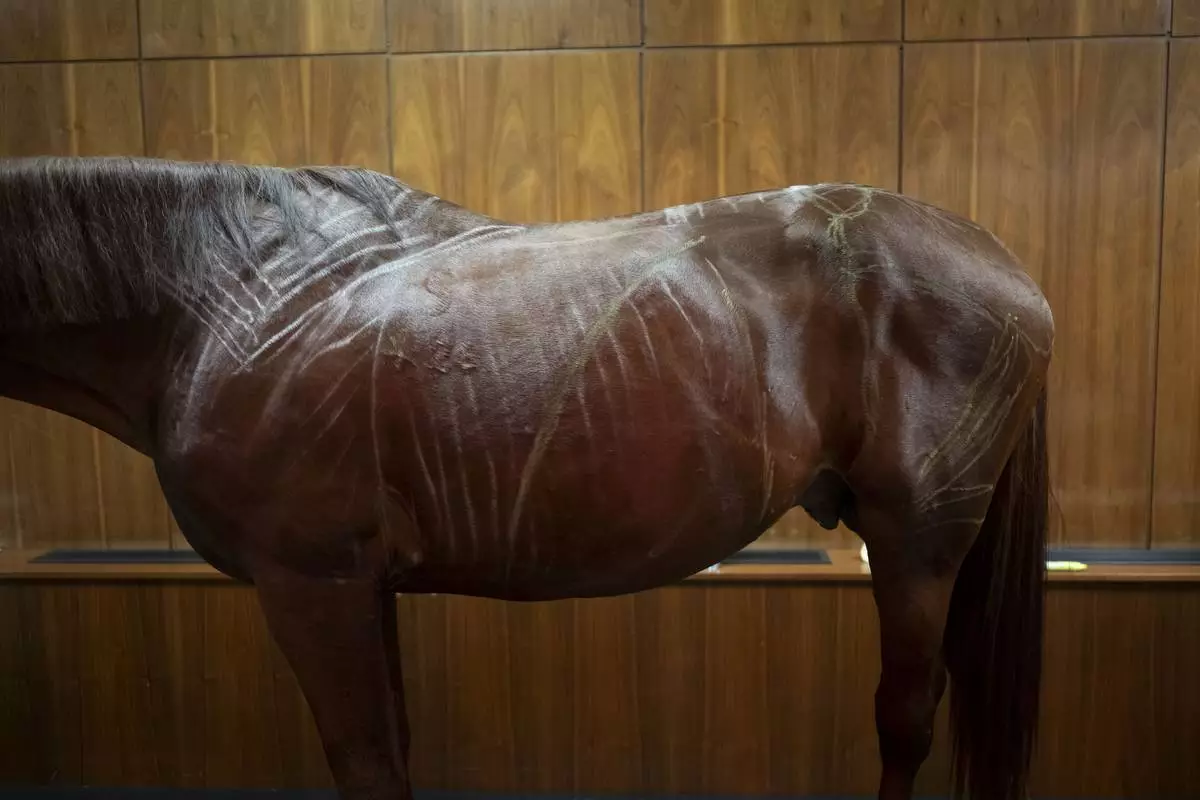
Dr. Peter Sotonyi, rector of the University of Veterinary Medicine in Budapest, Hungary, gives an anatomy lecture for first-year students, using chalk to mark the body of live horses, Monday, Sept 9. 2024. (AP Photo/Denes Erdos)
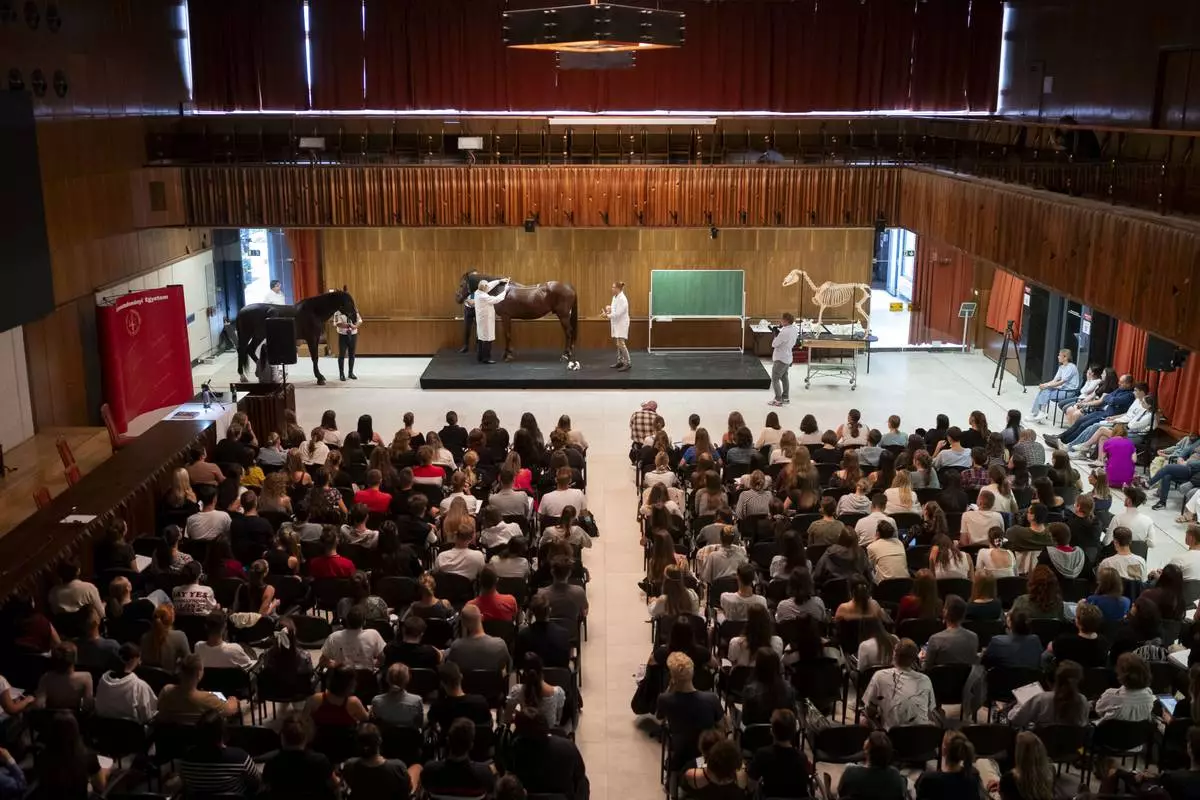
Dr. Peter Sotonyi, rector of the University of Veterinary Medicine in Budapest, Hungary, gives an anatomy lecture for first-year students, using chalk to mark the body of live horses, Monday, Sept 9. 2024. (AP Photo/Denes Erdos)
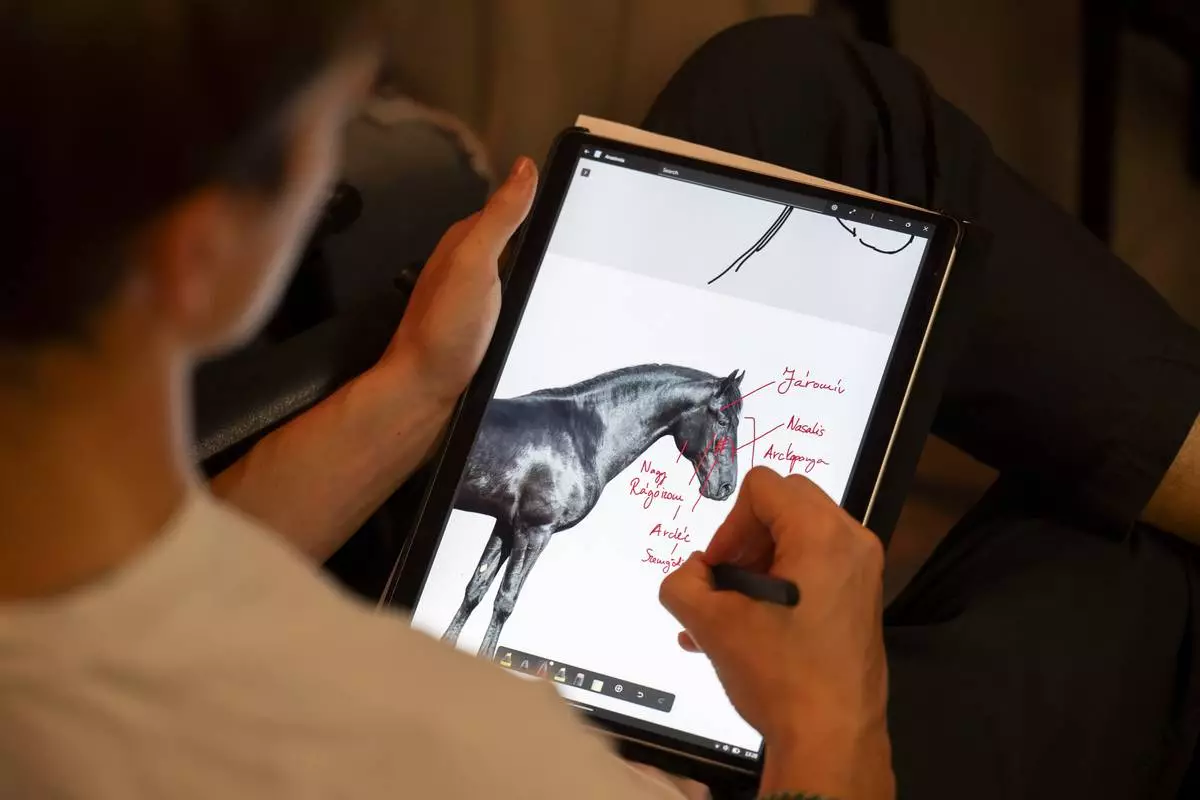
A first-year student takes notes during an anatomy lecture using a live horse from Dr. Peter Sotonyi, rector of the University of Veterinary Medicine in Budapest, Hungary, using a live horse, Monday, Sept 9. 2024. (AP Photo/Denes Erdos)
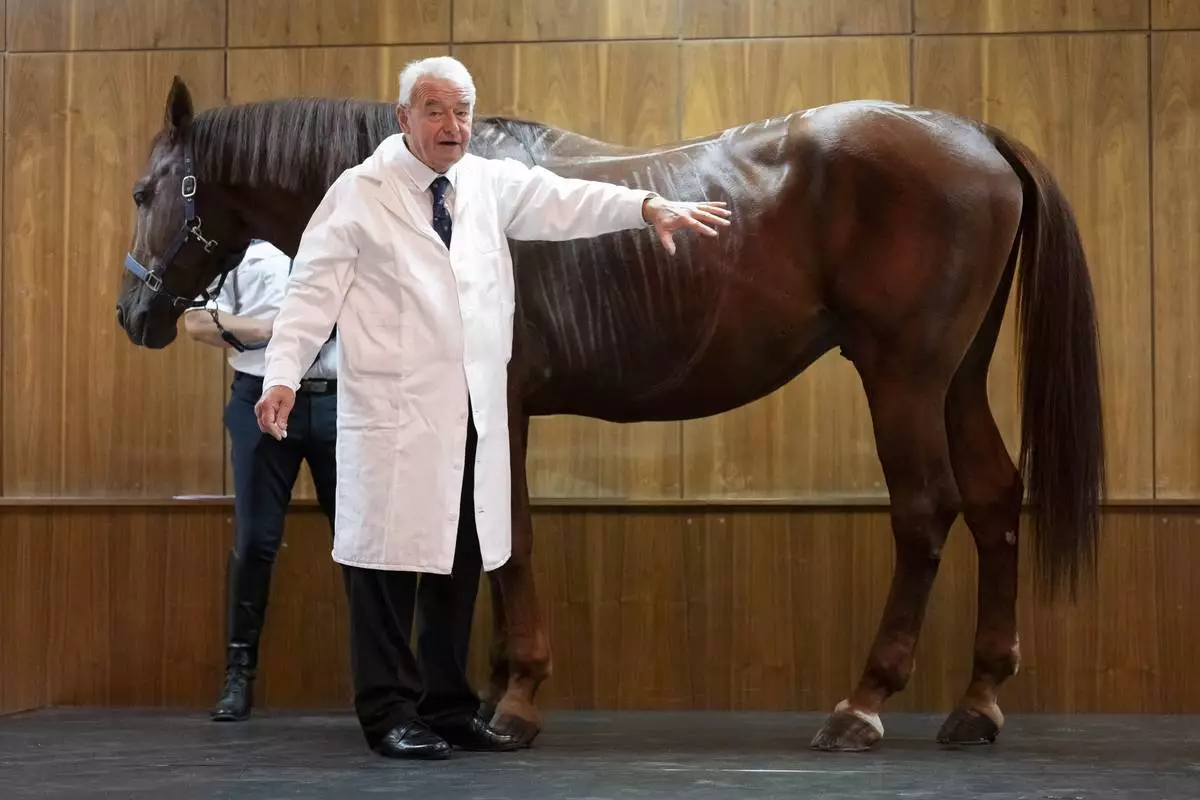
Dr. Peter Sotonyi, rector of the University of Veterinary Medicine in Budapest, Hungary, gives an anatomy lecture for first-year students, using chalk to mark the body of live horses, Monday, Sept 9. 2024. (AP Photo/Denes Erdos)
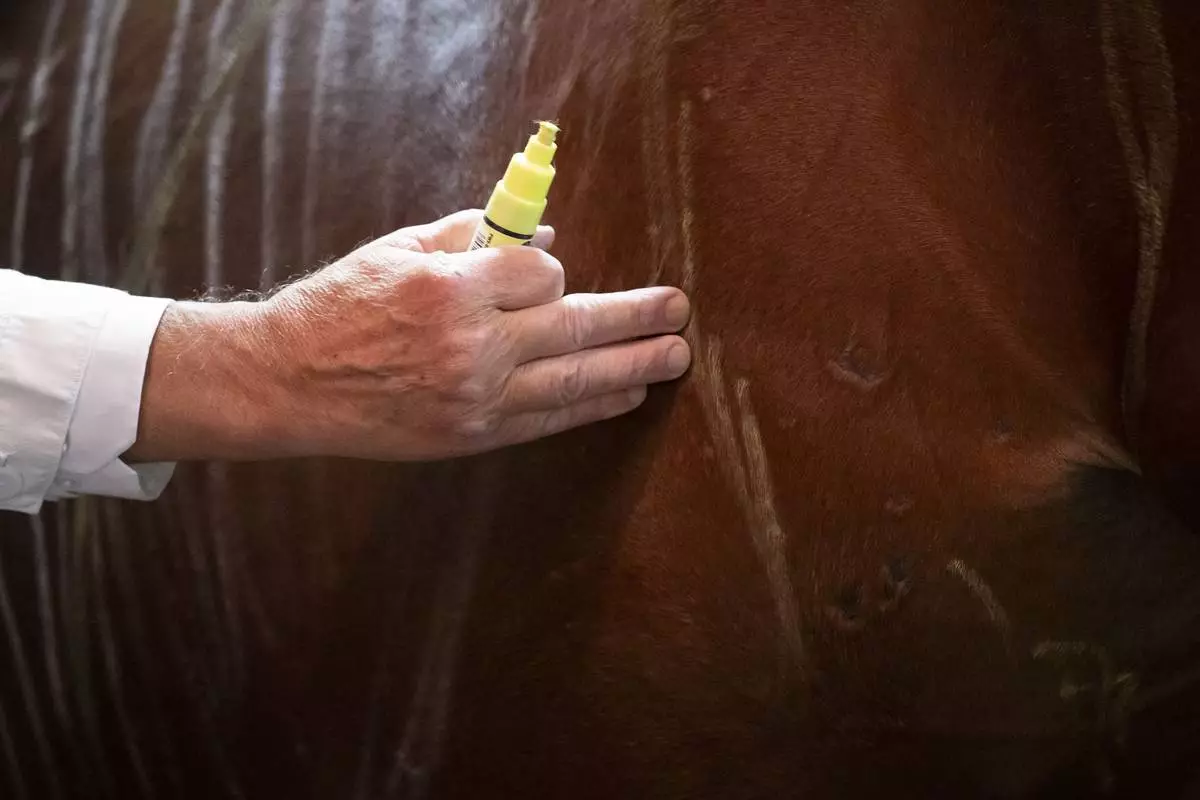
Dr. Peter Sotonyi, rector of the University of Veterinary Medicine in Budapest, Hungary, gives an anatomy lecture for first-year students, using chalk to mark the body of live horses, Monday, Sept 9. 2024. (AP Photo/Denes Erdos)
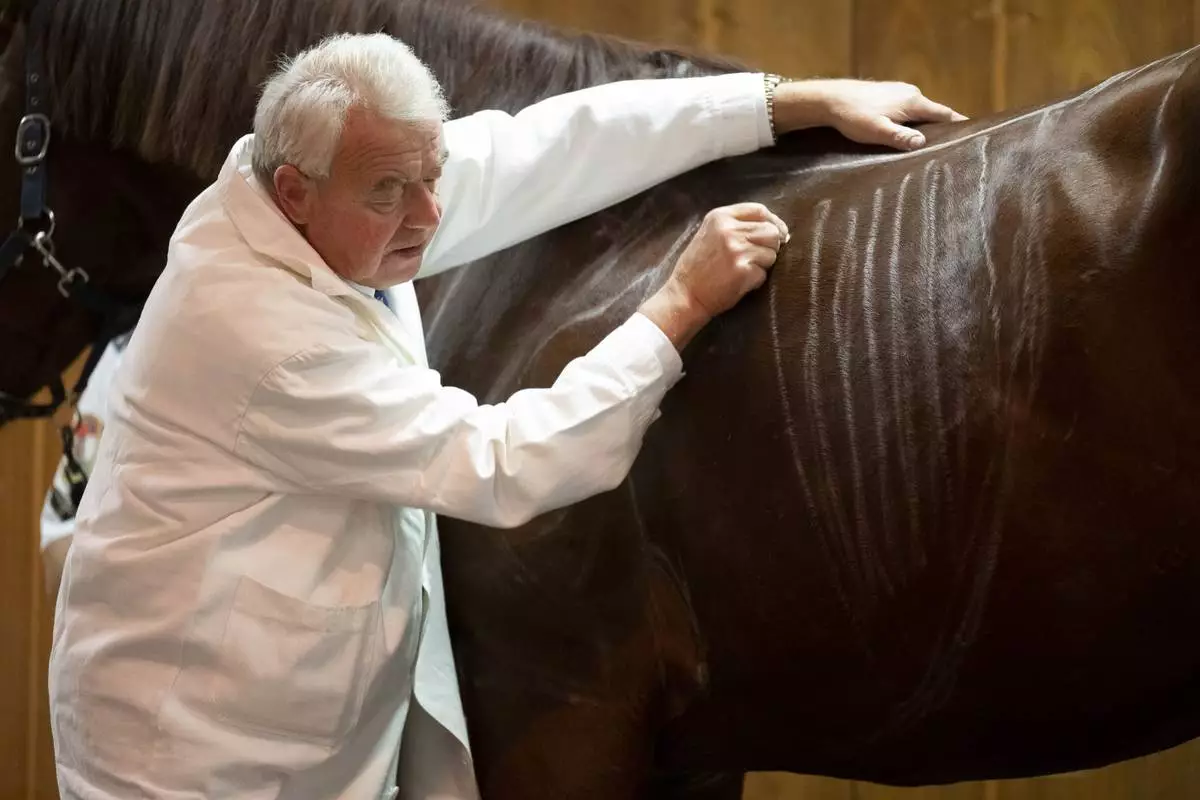
Dr. Peter Sotonyi, rector of the University of Veterinary Medicine in Budapest, Hungary, gives an anatomy lecture for first-year students, using chalk to mark the body of live horses, Monday, Sept 9. 2024. (AP Photo/Denes Erdos)
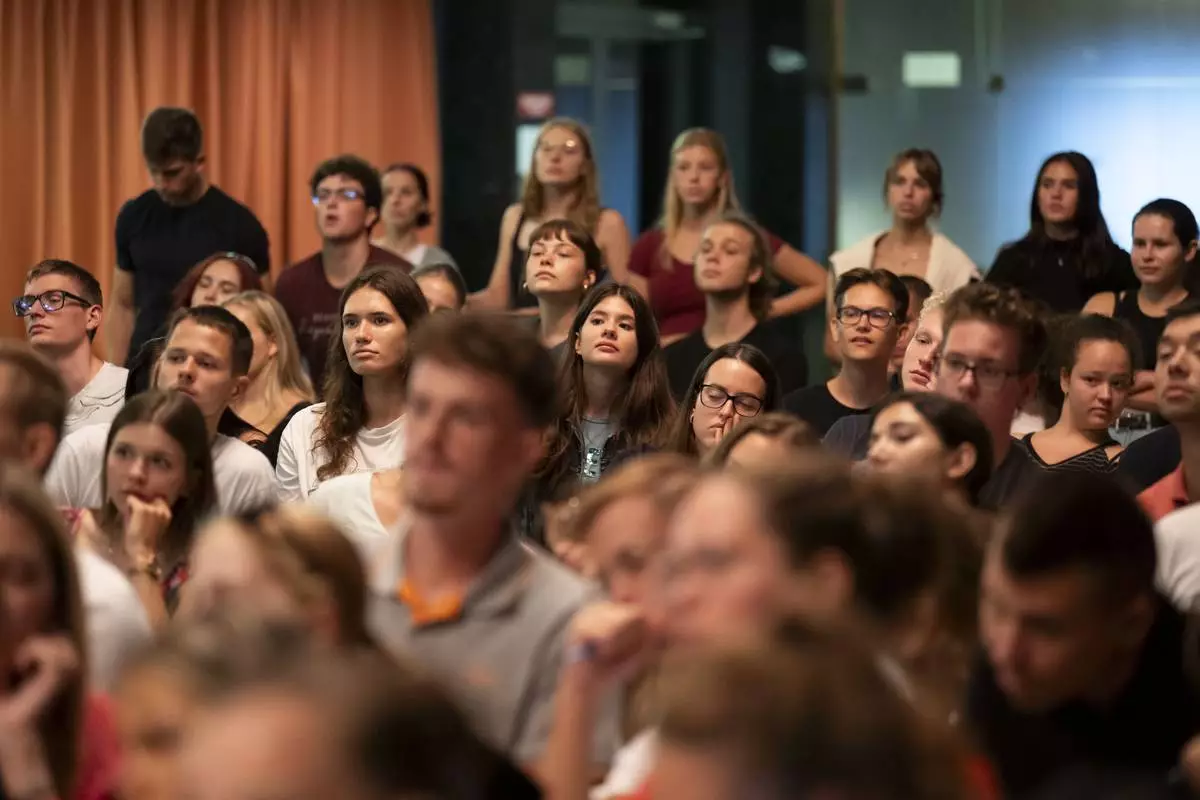
First-year students listen during an anatomy lecture using a live horse from Dr. Peter Sotonyi, rector of the University of Veterinary Medicine in Budapest, Hungary, using a live horse, Monday, Sept 9. 2024. (AP Photo/Denes Erdos)
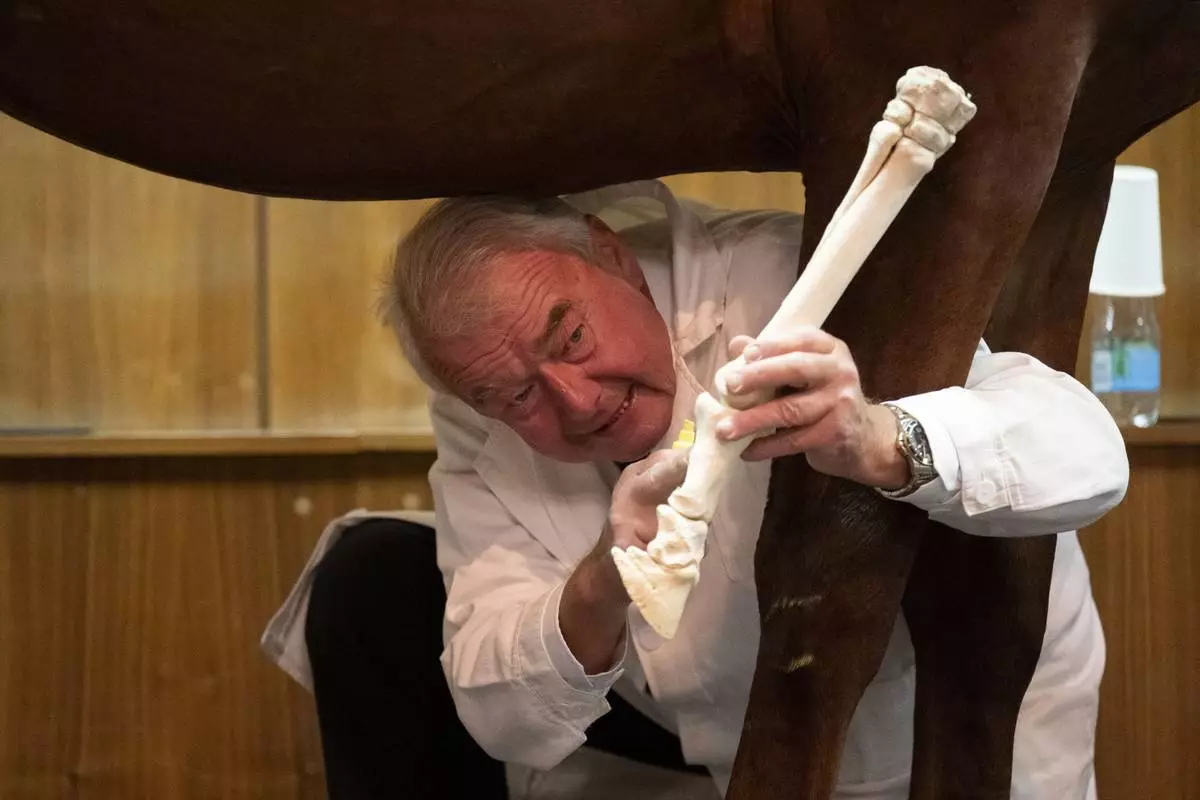
Dr. Peter Sotonyi, rector of the University of Veterinary Medicine in Budapest, Hungary, gives an anatomy lecture for first-year students, showing bones located in the body of a live horse, Monday, Sept 9. 2024. (AP Photo/Denes Erdos)
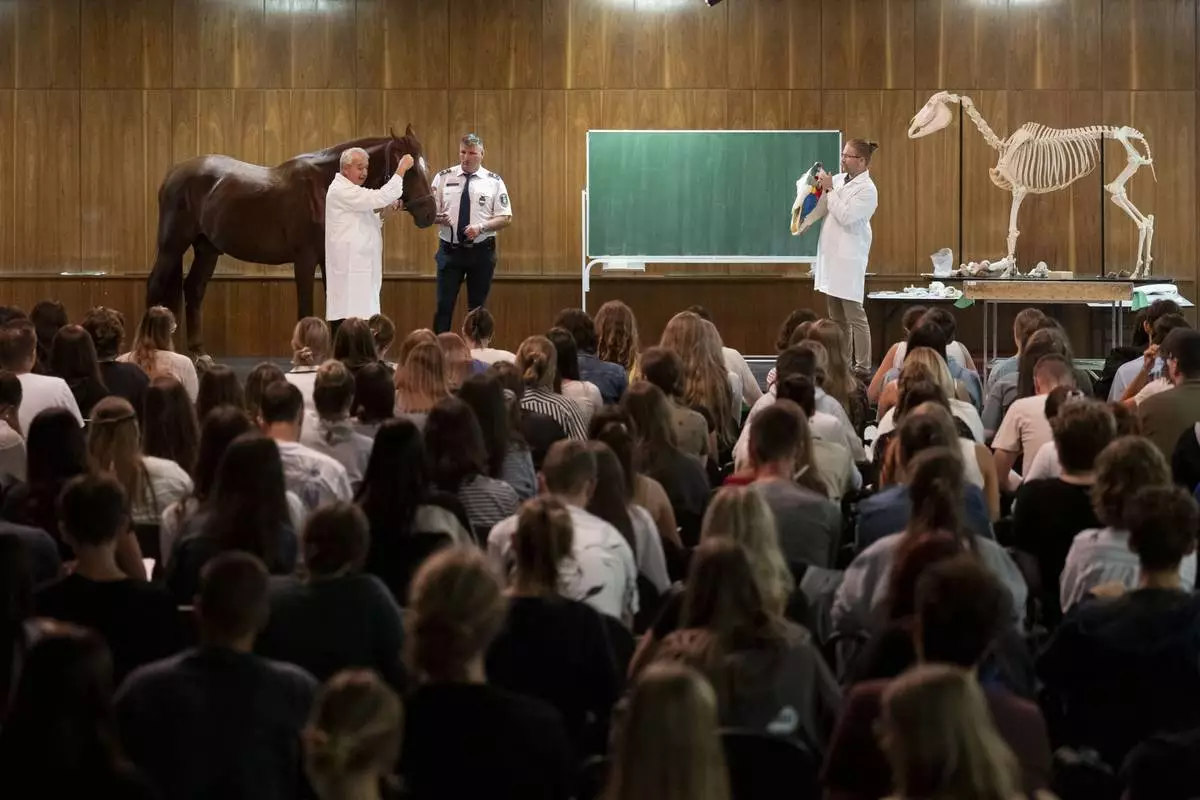
Dr. Peter Sotonyi, rector of the University of Veterinary Medicine in Budapest, Hungary, gives an anatomy lecture for first-year students, using chalk to mark the body of live horses, Monday, Sept 9. 2024. (AP Photo/Denes Erdos)

Dr. Peter Sotonyi, rector of the University of Veterinary Medicine in Budapest, Hungary, gives an anatomy lecture for first-year students, with a live horse, Monday, Sept 9. 2024. (AP Photo/Denes Erdos)
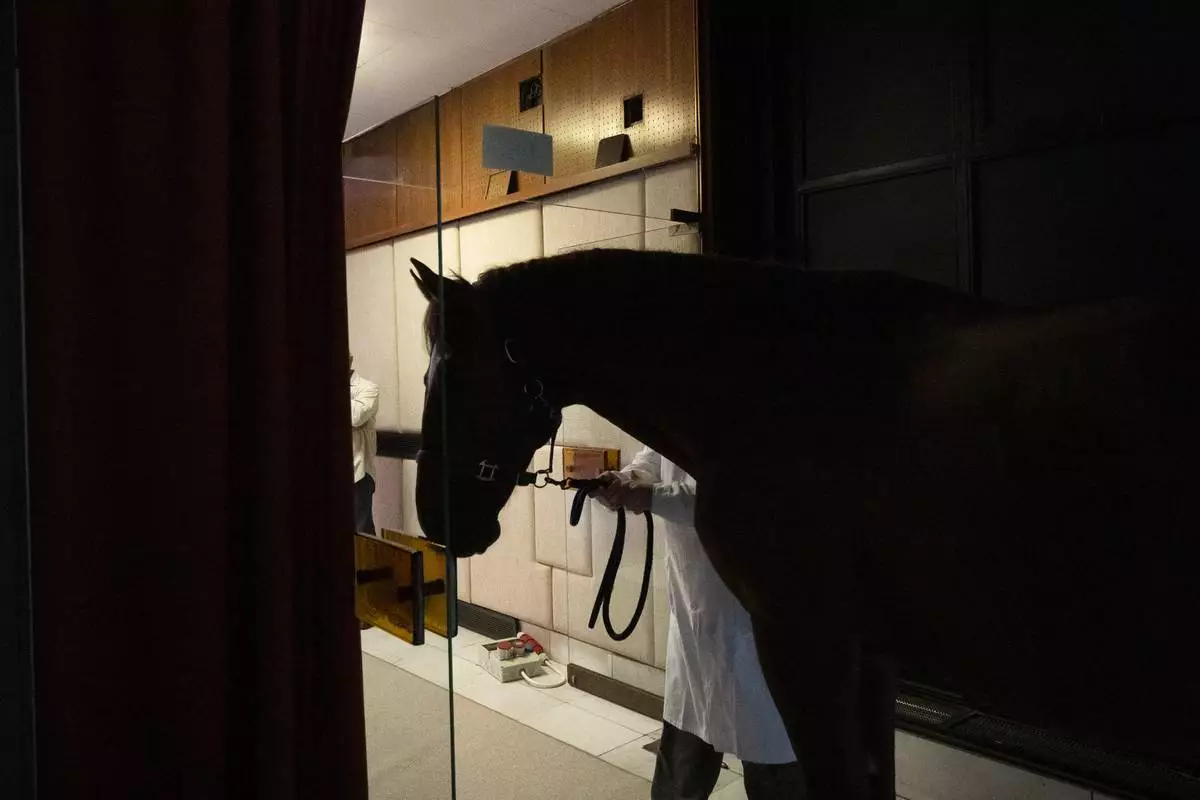
A horse enters a lecture hall at the University of Veterinary Medicine in Budapest, where Dr. Peter Sotonyi, rector of the University gives an anatomy lecture for first-year students, using chalk to mark the body of live horses, Monday, Sept 9. 2024. (AP Photo/Denes Erdos)
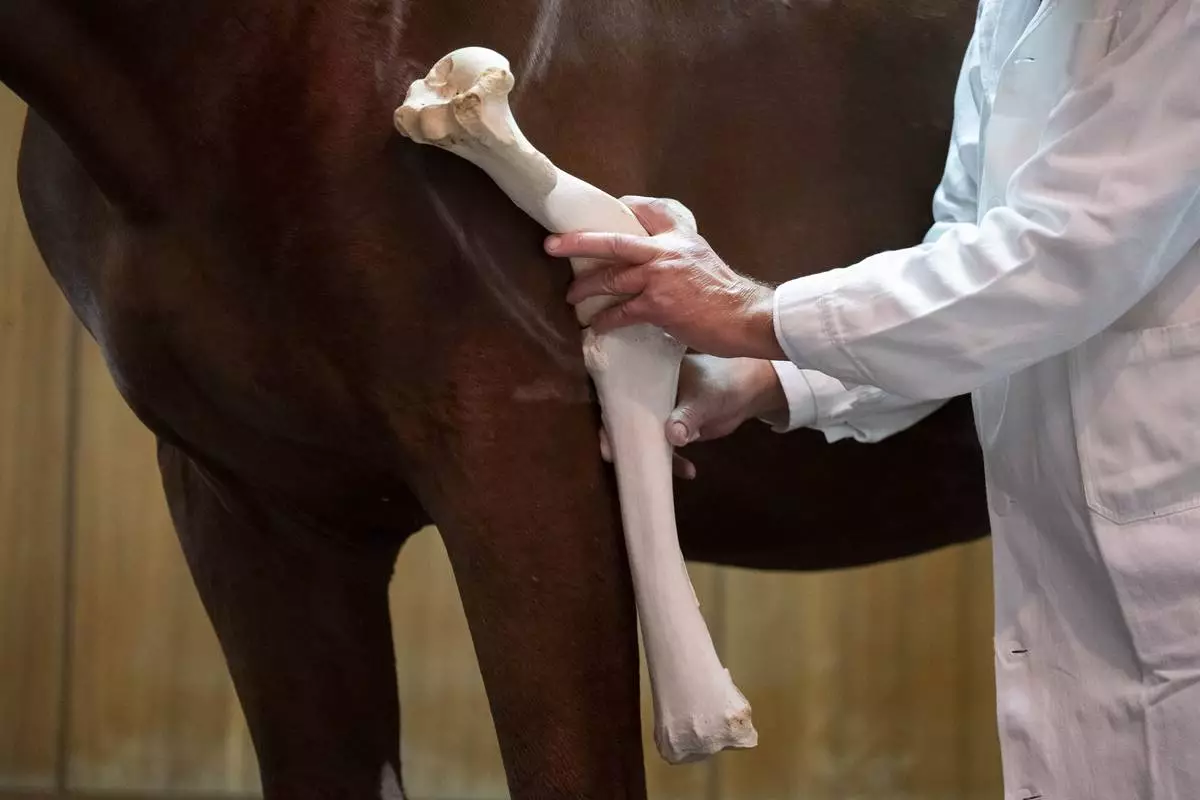
Dr. Peter Sotonyi, rector of the University of Veterinary Medicine in Budapest, Hungary, gives an anatomy lecture for first-year students, showing bones located in the body of a live horse, Monday, Sept 9. 2024. (AP Photo/Denes Erdos)
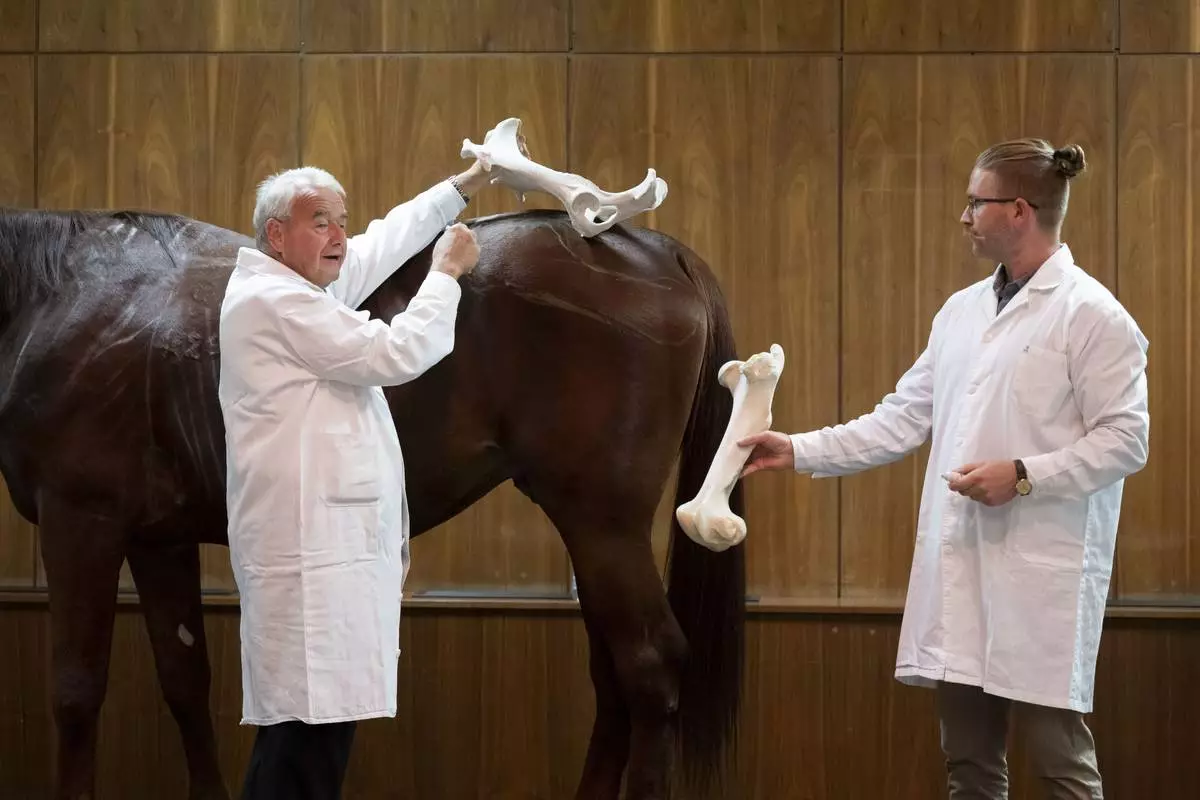
Dr. Peter Sotonyi, rector of the University of Veterinary Medicine in Budapest, Hungary, gives an anatomy lecture for first-year students, showing bones located in the body of a live horse, Monday, Sept 9. 2024. (AP Photo/Denes Erdos)
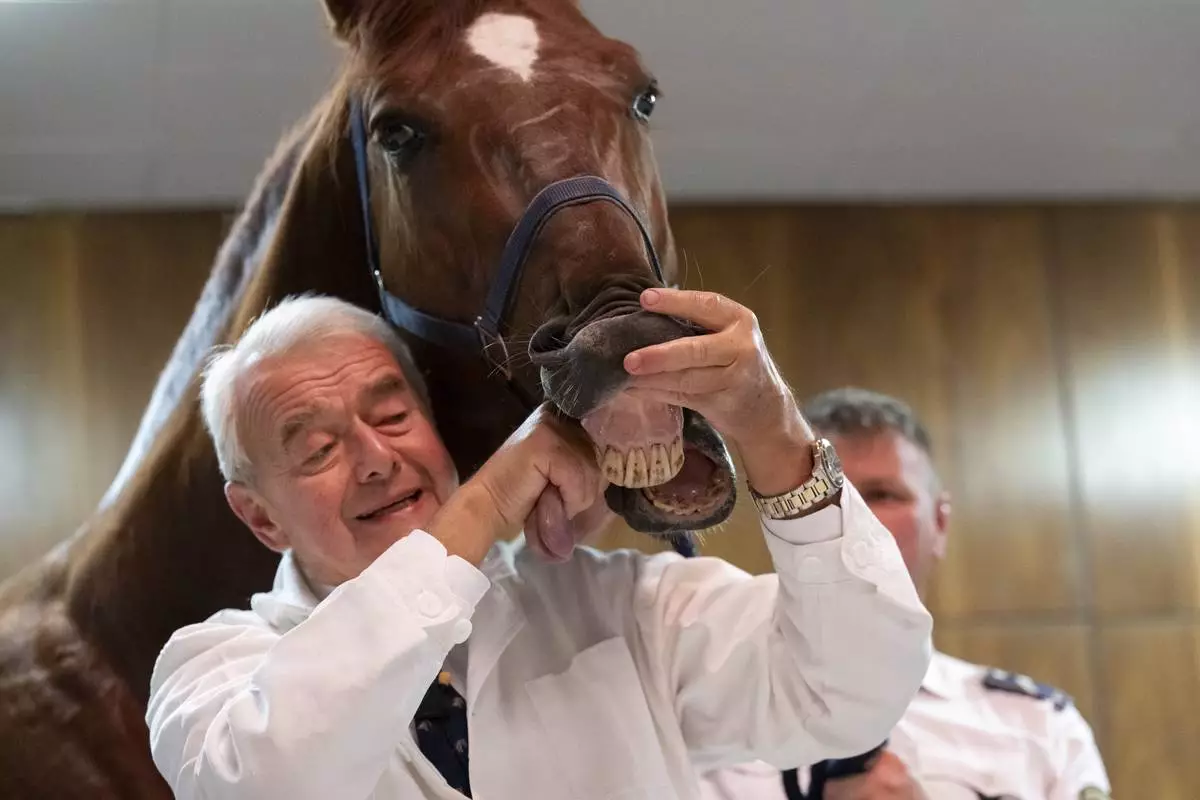
Dr. Peter Sotonyi, rector of the University of Veterinary Medicine in Budapest, Hungary, shows the tongue of a horse during an anatomy lecture for first-year students, using a live horse, Monday, Sept 9. 2024. (AP Photo/Denes Erdos)
THE HAGUE, Netherlands (AP) — A speech by the Dutch king on Tuesday is to lay out the new government's plans for the coming year as members of the hard right-led coalition bicker over its plans to drastically slash migration.
The day, marked by pageantry as the royals are driven through The Hague in ornate horse-drawn carriages, also brings the first major test of a technocratic new government chosen by the right-wing parties that triumphed in last year's elections.
King Willem-Alexander’s speech to lawmakers from both houses of the Dutch parliament is written by the government and lays out legislative plans and the budget for the coming year.
On Monday, a senior member of a party in the coalition said she would oppose the government's plans to rein in immigration if a key political advisory panel rejects them.
The comments Monday by Nicolien van Vroonhoven of the New Social Contract party triggered angry reactions from Geert Wilders ’s populist anti-immigration Party for Freedom, which won national elections last year, and the conservative People’s Party for Freedom and Democracy.
The spat underscored the fragility of a coalition that was pulled together after months of negotiations. Prime Minister Dick Schoof was eventually chosen to head a cabinet made up of politicians and civil servants because the leaders did not want the outspoken Wilders as prime minister.
While the government seeks consensus on a deal to drastically dial back immigration, a town in the northern Netherlands opened a sports hall overnight to accommodate asylum seekers who otherwise would have been forced to sleep outdoors because of a shortage of space at a reception center.
The mayor of Ter Apel accused Margriet Faber, the minister responsible for asylum seekers and migrants, of allowing an accomdation crisis to escalate.
“The minister is shunning her responsibility. She is responsible for people who come to the Netherlands for asylum. She has had enough time and sufficient opportunity to accommodate people in a decent way. She consciously does not do this,” mayor Jaap Velema said in a statement Monday.
The government is planning to declare an “asylum crisis” to pave the way for tougher measures including reining in visas for family members of people granted asylum and making it easier and quicker to deport migrants who are not eligible for asylum.
The government also plans to apply for an opt-out from European Union migration rules and step up border check following similar moves implemented Monday by neighboring Germany. It remains unclear how many of the Dutch government's plans can be enforced.

View of the governments buildings under renovation and the skyline of the Hague, Netherlands, Monday, Sept. 16, 2024. (AP Photo/Peter Dejong)
















